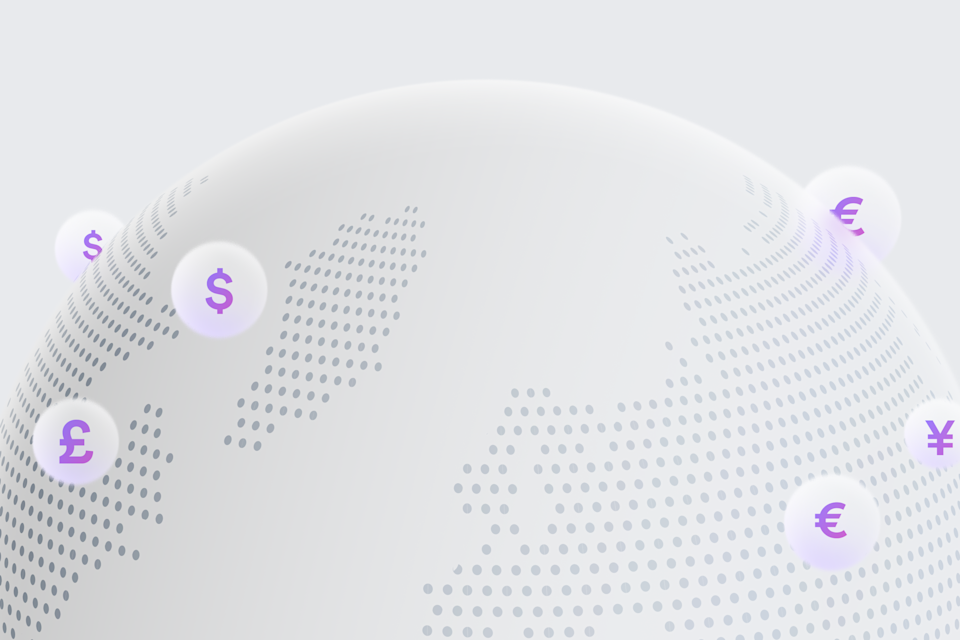Amazon global selling: Is international expansion right for you?

Hammad Nafees
Airwallex Guest Contributor

International expansion is the hot topic in the Amazon-verse these days. You see some big sellers talking about it on their blogs, influencers posting videos about it on their YouTube channels, and Amazon itself regularly pushing out case studies on its website that cover store owners selling internationally through its platform – all of which makes sense.
Amazon now has a presence in 18 countries worldwide, with Poland being the most recent addition. Its fulfillment operations have started to grow roots in different marketplaces, thanks to programs like Pan-European Fulfillment by Amazon (FBA). Sales are popping off all around. On top of that, it continues to boast more than 200 million members globally who are happy to pay for its services every month.
The numbers definitely make a strong case for selling internationally on Amazon.
Because most store owners are yet to catch the wave, this could be the ideal time for you to plant your seeds when things are still early.
But how do you even know if international expansion is right for you? What are the points to consider when deciding whether to sell globally on Amazon?
Expanding to new markets? Instantly create accounts in 60+ countries.
4 things to consider when expanding your Amazon business internationally
Just because the opportunity is ripe for sellers to expand their Amazon stores internationally doesn’t mean it could be the right strategy for you. You must consider certain factors before you start contemplating your next step.

Are you making regular profits?
Expanding internationally requires capital. The smart move is to use some of the returns from your existing operations for this investment. Your profits don’t necessarily have to be on the way up, though. Having consistently green numbers for three or more years is a good indication that you’re financially ready to take the next step in your growth.
Having regular profits also means that your business is consistent, you’ve solved any crucial issues for your product, and you know how to navigate your way on Amazon. You’re now equipped with the skills and experience to pull off a global launch.
Some sellers, however, see their low profits and decide to move to a new market because they think it will help boost their sales. And we recommend never doing that. If you’re struggling in your local market, chances are you’ll struggle wherever you go. Look closer and evaluate where you may be falling short.
[Related: Why capital matters for international expansion and how to get it]
Has the market hit saturation?
You can grow only so much within a given space, and if you think you’ve maxed out your current market potential, it might be a good idea to look for greener pastures abroad.
However, remember data must support your sentiments. You can’t just rely on your instincts. You must study the market first.
For example, let’s say you sell door draft stoppers in the U.S. Your Amazon store has those silicone models that come with a self-adhesive strip at the back. Your sales numbers look great, and you have a low best sellers rank (BSR) and high organic rank in your category. Can you grow any further?
Well, so many other types of door draft stoppers are available these days. You have the velcro ones. Magnetic door draft stoppers are popular, too. Sliding stoppers might work as well.
Find out whether adding these could reinforce your sales. If not, you might have hit a wall, and you should probably look to expand in other markets.
Is there a demand for your product in other markets?
Gauging product demand in foreign markets is crucial if you want your expansion to succeed. What’s the point of selling a product on Amazon.de when there’s no demand for it there? How will doing that help you achieve your goal?
You can use product research tools like ZonGuru, Helium 10, and Jungle Scout to gain insight. They’ll give you all the information you need to make an informed decision. You can also look at the search terms report in your Seller Central for the market you’re interested in to see how often customers search for that product when shopping.
If you want to take your research to the next level, you can always hop on the marketplace, find listings relevant to your product, and read customer reviews. Reviews can be highly insightful.
Ideally, look to expand in a budding market. That will help you fill the market void without needing significant investment. More developed markets are good for instant returns, but they also carry more risks and need a larger investment to establish a foothold.
Do you have the supply chain ready to take on the challenge?
Suppliers will make all kinds of promises to land the next order, but they’re not all equipped to take on the supply chain requirements to support you with your international expansion. Having a supplier with experience working in the market you’re targeting can help you avoid inconveniences down the road.
For example, we know you need a customs procedure code (CPC) to import toys in the U.S. Make sure your supplier can provide you with one if you plan to sell children’s toys on Amazon.com.
Sometimes the requirements entail subtle changes in product design. Let’s say you sell furniture in the U.S. and want to introduce your product line in Europe. You can’t sell the same items, can you? In the U.S., furniture items are bigger. Their design generally focuses on functionality and comfort. But people in Europe tend to use smaller-sized furniture. Furthermore, the design has intricate details and patterns. Does your manufacturer understand these differences?
Top market choices for international expansion
So, you pretty much tick all the boxes above and are primed for expanding your Amazon business internationally. Which markets should you target?
We have some recommendations.
Canada
Launched in April 2019, Amazon.ca is home to more than 30,000 sellers who make over $900 million in sales yearly. It dominates the country’s eCommerce landscape and is the most popular online marketplace, followed by Walmart and Costco Canada.
Compared to the U.S., Amazon Canada offers a more viable entry point for sellers looking to expand their operations internationally. The fact that it still has a lot more room to grow, both in terms of business and competition, makes it a top choice for expansion.
Germany
Germany is Amazon’s second-largest market. It contributes over 7% to the business’s total revenue. More than three-fourths of the country’s population uses Amazon.de to shop online, which makes it the leading regional online marketplace.
On top of boasting such impressive numbers, Amazon Germany offers relatively low competition. It has more than 244,000 registered sellers compared to the U.S., where the active seller count is over 1 million. The marketplace is known for its quality customer service and seller support.
[Related: Amazon and the one-stop-shop: The different ways to stay VAT-compliant across Europe]
Japan
Next, Japan has a fairly old Amazon market, but international sellers have largely left it unexplored because it’s a tough market to navigate.
Japanese culture is quite different from the West. You need to deeply understand the shopping habits of the people living there. When selling on Amazon.co.jp, you also need to localize your listing. This is another challenge that puts off sellers looking to expand.
However, Amazon Japan definitely has a lot to offer to those willing to put in the effort. It has the fourth-highest sales share in the Amazon ecosystem. Many Japanese people like to shop online, especially on Amazon. And once again, the competition is relatively low compared to Amazon U.S.
Singapore
Selling on Amazon.sg is all about nailing the early mover advantage. The marketplace launched back in 2019, and in just a few years it has cemented itself as the third-largest eCommerce website in Singapore.
More than 60% of Singaporeans like to shop online, which makes your expansion prospects quite bright. You can be certain that a lot of people will stop by to shop from your store, especially in the future as Amazon further takes hold in the local eCommerce landscape.
Plus, you get pretty much next to no competition on Amazon Singapore, especially if you’re used to selling in more competitive markets like the U.S. or the U.K.
India
Last on our list is India.
Like Singapore, India is one of the fastest growing Amazon marketplaces. Analysts expect it to contribute to Amazon’s growth by up to 20% in the next five years.
Currently, Amazon India hosts more than 20 million products and 300,000 registered sellers. It gets more than 150,000 orders daily. And you have plenty of small business success stories already rolling in: not bad for a market that’s still new.
You also can expand with a reasonable budget on Amazon.in, especially if you leverage the local industry for your sourcing needs.
[Related: The ultimate guide to paying overseas vendors]
Checklist for selling globally on Amazon
But how do you even start selling internationally on Amazon? What do you need to go global?
Well, here’s a checklist that we hope will help you get ready to take your Amazon business international.
Marketplace account
You must have a seller account for the marketplace where you want to sell. That means you need to submit all the documents required for opening an account in that marketplace. You can find the document details for different Amazon marketplaces below:
But there’s an exception to this rule for markets operating under unified access. These include North American and European marketplaces.
For example, if you sell in the U.S. and plan to expand to Canada or Mexico, you don’t need to create a separate seller account. You can use the one you have for all three marketplaces. Likewise, if you sell in the U.K., you can use your unified account to sell in Germany, too.
[Related: How to save money when collecting funds from your foreign Amazon account]
Tax registration
Of course, you must be tax compliant if you want to sell in an international market. Tax requirements vary from country to country. Make sure you fulfill all the local obligations for sales, import, and income taxes to avoid any inconveniences down the road.
Importer of record (IOR)
An IOR is required if you plan to use the FBA program to sell goods in international markets.
Every international transaction involves an exporter (the seller or you) and an importer (the buyer or customers). You send goods as an exporter from country A. Customers receive those goods as an importer in country B. Then, they pay you for the purchase.
It’s easy and simple.
However, the problem is that when you use FBA in this case, goods are shipped to an Amazon warehouse in another country. Amazon can’t pay you because there haven’t been any sales yet. The goods are stored until someone buys them from the marketplace.
So, no one acts as an importer here. The transaction is incomplete, and you can’t proceed with it.
That’s where an IOR comes in. This can be your offshore registered business (which not many sellers are willing to form) or some other specialized firm, like Zee. The entity can act as an IOR on your behalf for international transactions.
Listing
Regardless of whether you sell on a separate account or one with unified access, you’ll need to create a listing for your target marketplace.
Creating a listing should be easy. Just make sure you follow the guidelines that apply to your marketplace, especially the instructions about the character limit for the title, bullet points, product description, and backend search terms.
Also, keep in mind that you’ll have to do keyword research from scratch. Keyword volumes often vary across marketplaces. If you aren’t careful, you can end up prioritizing less-effective keywords.
For marketplaces like Amazon Germany, Italy, Spain, and Japan, you’ll also have to translate and localize your listing. We recommend hiring a professional translation service to write your product’s listing copy.
[Related: How to choose a digital retail agency to help you expand internationally]
Logistics
When you use Fulfilled by Merchant (FBM), you’ll need a local carrier that can drop the products to your international customers. Do your research before picking one because you’ll ultimately need to manage customer expectations. A bad fulfillment experience can get you a negative review, and bad reviews can be difficult to come back from, especially if they start piling up.
Alternatively, you can use Amazon FBA to handle the logistics on your behalf. The solution might be a little pricier than FBM, but it keeps everything streamlined and super convenient. Plus, most Amazon shoppers prefer to buy from sellers that offer FBA delivery because it’s faster.
Payment and receipts gateway
Finally, you’ll need to set up a gateway through which you can receive payments from Amazon. You can approach this in three ways:
Use your existing U.S. bank account and Amazon Currency Converter service. Amazon will convert foreign currencies from foreign sales for you and deposit your local currency (USD) into your local bank account. However, you may not get good conversion rates.
Open a local traditional bank account in your target markets. You’ll need to have the correct paperwork to file, and you have to be present when opening the bank account. This may include long delays in the process and will require travel.
Use Airwallex. Create global accounts in seconds, receive and hold unlimited foreign currencies without fees, and convert whenever you want with market-leading foreign exchange rates.
[Related: 9 ways to scale your eCommerce store faster, smarter in 2022]
International expansion: Is it worth it?
In short, expanding your Amazon business internationally opens new doors for growth if you plan your move carefully and consider all the underlying factors.
We hope this guide helped you understand how to proceed with global selling on Amazon. As a bonus, here’s a downloadable checklist that you can use to keep track of all the important pointers and prerequisites needed for international expansion on Amazon.

Hammad Nafees
Airwallex Guest Contributor
A marketer by trade, a writer at heart, and an Amazon evangelist around-the-clock, Hammad can often be found discussing the ins and outs of the marketplace across the Web. In the very rare instances, when he is not busy educating the audiences, he likes to sit down and have a good me-time watching the latest football action on his large-sized TV screen.
Posted in:
Finance operations

